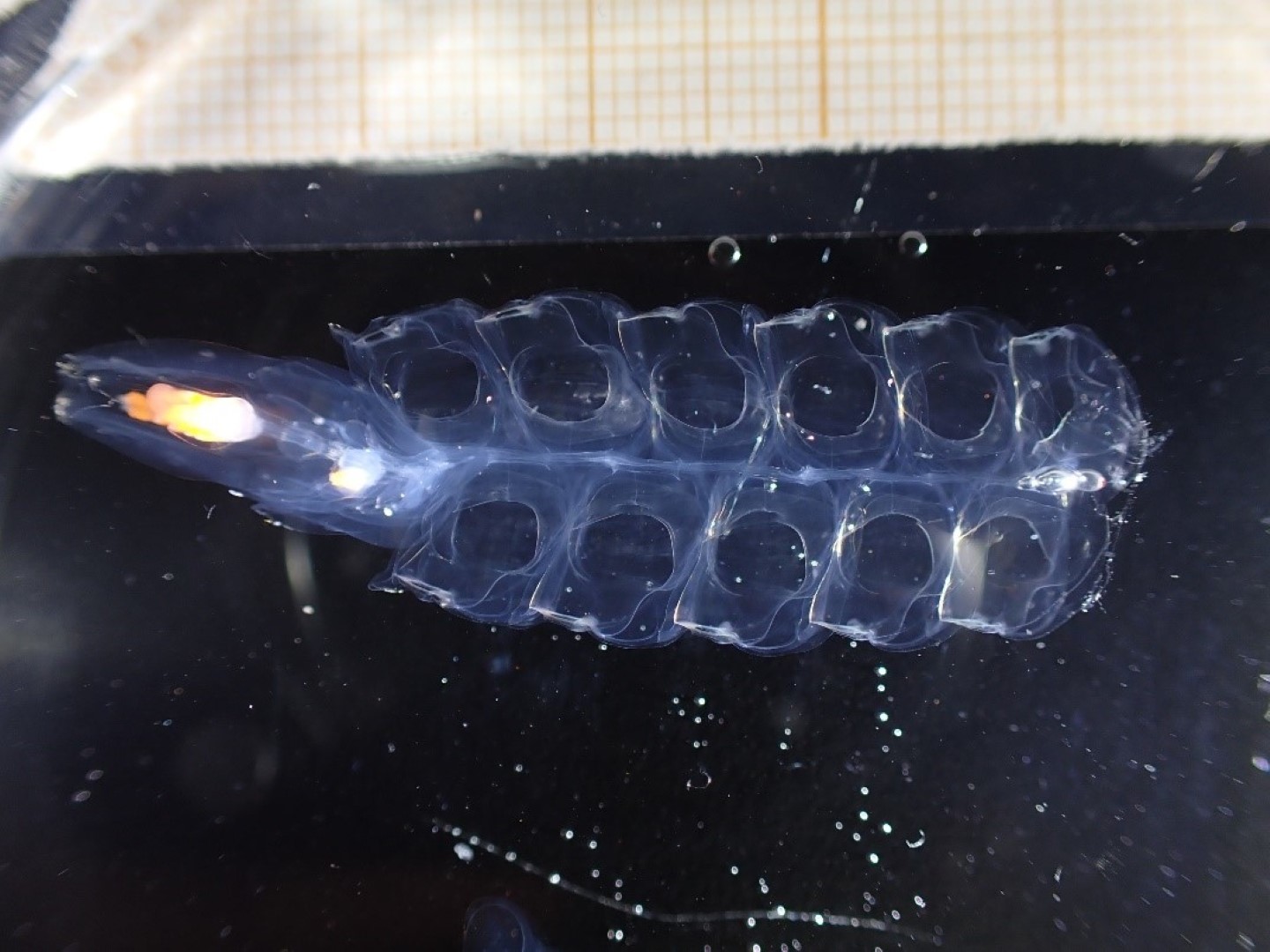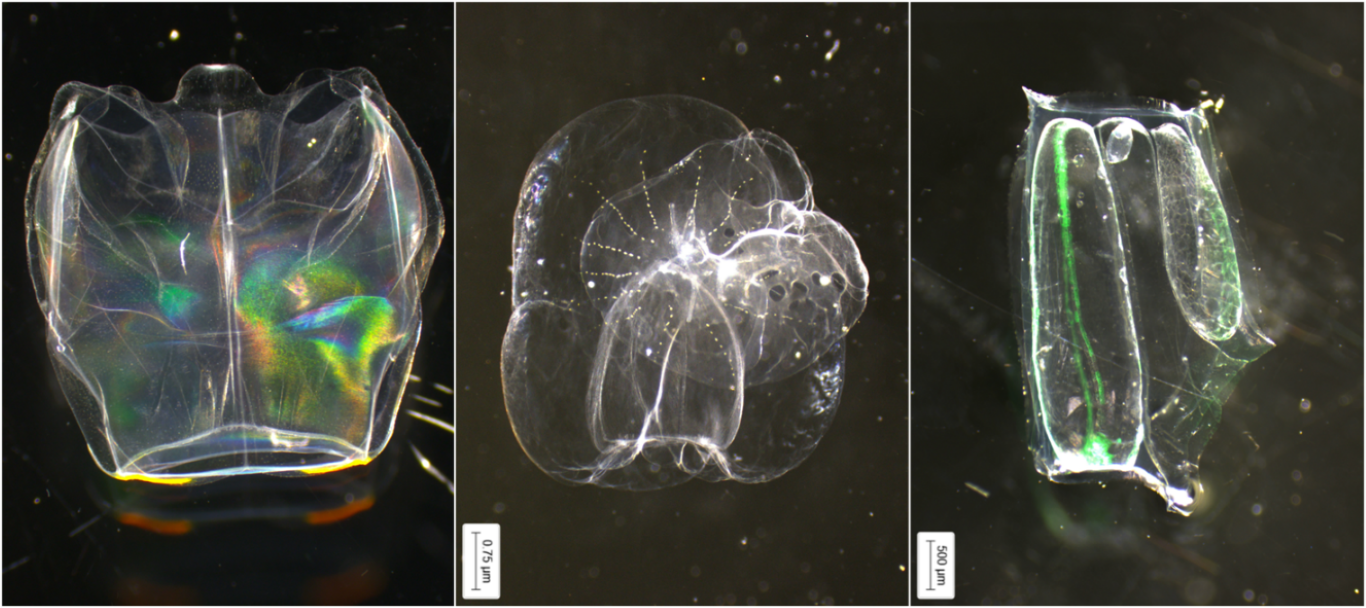As part of our cruise MSM126 focus on the “jellyweb”, we are also interested in siphonophores. Even in the vast and mysterious world of marine life teeming with peculiar inhabitants, these distinctive creatures stand out. While they share similarities with jellyfish, particularly in having stinging cells known as cnidocysts, they do not look much like them at first glance. Siphonophores, in fact are not single organisms but are colonies comprised of individual units called zoids, each performing a specific function in seamless concert. These colonies consist of a myriad of entities termed zoids, each assigned a specific role within the collective, be it floats, tentacles, reproductive organs, or digestive systems. Among the siphonophores, the Portuguese man o’ war, Physalia physalis, garners significant recognition.
The variety of siphonophores is astonishing, with sizes ranging from small, nearly invisible species to enormous deep-sea giants that can stretch several meters long. They exhibit a wide range of unique features, such as specialized tentacles for hunting, organs that produce light to attract food, and the ability to glow in the dark.

These creatures play a pivotal role in marine ecosystems as predators of plankton and small fish but also as food for other marine animals like the Atlantic Mackerel. Their prevalence in many oceanic regions positions them as key component in the intricate marine food web, shaping prey populations and contributing to the regulation of marine environments. Despite their ecological significance, siphonophores have remained largely under the radar. Yet, recent studies have unveiled new species, fascinating behaviors, and astonishing adaptations, increasing our fascination with these enigmatic critters.
However, during our expedition MSM126, by utilizing our ROV ((Remotely Operated underwater Vehicle) PHOCA customized for midwater sampling, we had the chance to gather intact colonies alongside other deep-sea species, thus enhancing our research capabilities. Some of the fascinating siphonophores captured for our studies are shown in the figures in this blog.
Sonia, Florian and Jamileh
